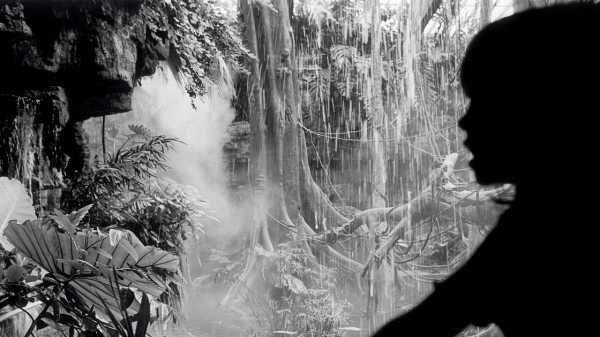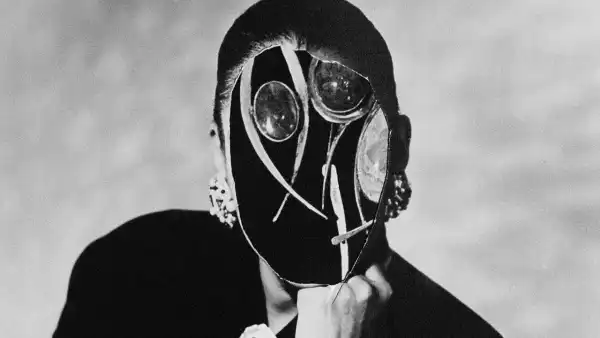
Like many young people who luxuriated in the possibilities of the nineteen-sixties, Irv Teibel wasn’t quite sure what he wanted to do with his life. Born in Buffalo, in 1938, he cast a wide net throughout his twenties, studying science and art, serving in the U.S. Army, and finally settling in New York, where he worked a string of jobs in publishing, photography, and design. In his free time, he sought out the city’s most unusual restaurants, studied electronic music, and helped out with his friends’ art projects. One night, while working on a film score for the avant-garde artists Tony Conrad and Beverly Grant, Teibel found himself on Brighton Beach, recording the sound of the crashing waves. He took these tapes home and began listening to them obsessively, as though they were the most irresistible pop song ever written.
Teibel eventually left Conrad and Grant’s project, returned to the beach, and recorded hundreds of more hours for himself. He wanted to capture the sound of the “perfect” ocean. In 1969, Teibel started his own company and began releasing “Environments,” a series of “natural sound” recordings. Each side of an LP was devoted to a setting: the “ultimate” seashore, a warm summer night in the backwoods of eastern Pennsylvania, a Caribbean lagoon, the sound of streams and insects, birds fluttering and chirping at the Bronx Zoo, a Central Park “be-in.” “Environments,” which was eventually distributed by Atlantic Records, was a surprise hit. The series dovetailed nicely with the sensibility of the late sixties and seventies. People listened to them for a variety of reasons: to relieve stress, to sleep, to understand and commune with the world around them, to test out the new advances in home stereo technology. There were also rumors that they enhanced sexual performance.
In February, Numero Group, a Chicago-based reissue label, released the entire run of “Environments” as a smartphone app. It was a remarkably creative way to reintroduce Teibel’s work and ideas. (Teibel died in 2010.) Each of the environments is available on the app, along with artwork and notes from the original LPs, and there is a feature to sequence your own playlist. I first downloaded it while waylaid at an airport, and then I found myself using it everywhere. The crisp call of birds, the foamy wash of the sea, crickets at dusk: in the private drift of my headphones, it was mesmerizing. Scholarly research on personal-listening devices, like the Walkman or the iPod, often dwells on themes of empowerment. Users talk about soundtracking the movie in their heads, exercising some degree of control while navigating a city’s crowds. This produces moments of magic: the fleeting romance of someone on the train looking up just as her song arrives at a stirring lyric, the quirky effect of a jogger in the distance momentarily synching with the rhythms in her headphones.
“Environments” had a radically different effect. It made me feel powerless, like I was experiencing something great and sublime. I’ve sat in my car and listened to the ocean. I’ve walked through the park while listening to what that park sounded like decades earlier, the blissful din of anti-war protesters, drum circles, and young people tripping on acid. I’ve admired a sunny day while listening to thunder pounding down on Teibel’s fire escape. There is a robust industry for ambient-noise apps, especially for parents and for those who have trouble focussing or sleeping. Often, they are built on a sense of constancy, or very long and repetitive loops. While “Environments” did remind me of a “falling rain” app that my wife and I used to play for our newborn to get him to sleep, listening to it heightened, rather than neutralized, my senses. The sounds, as they meandered and dissolved, made me wonder what was happening just beyond Teibel’s reach. I fell out of step with the rhythms around me, transported instead to the mundanity, and beauty, of somewhere else.
“Teibel hadn’t meant for ‘Environments’ to preserve nature and yet, in its strange way, it did,” the writer and critic Mike Powell wrote in a 2016 piece for Pitchfork on Teibel’s legacy. “Environments” was a triumph of technology and precision, not a celebration of raw, unfiltered nature. But, as Powell points out, many of the series’ sounds capture experiences that are no longer available to us. The stretch of Coney Island where Teibel first recorded the ocean was “ripped up by Hurricane Sandy.” The aviary at the Bronx Zoo collapsed after a snowstorm in 1995.
When contemplating the past, we tend to privilege sight over sound. In part, this is because there’s a greater archive of what our forebears saw than what they heard. But, as the historian Emily Thompson has shown, the sonic past can tell us things that images, materials, and descriptions can’t. Her work on the Roaring Twenties, for example, strives to capture a turning point in modern life, when the “ephemeral vibrations of sound” interacted “with a material world intended to control those vibrations.” (Thompson helped create a Web site mapping the sounds of 1930 Manhattan, and there is a growing community of field recorders creating “sound maps” around the world.)
I spend a lot of my free time in record stores, and I had always been intrigued by the “Environments” albums; as with many relics of a previous generation’s fads, used copies are abundant and relatively cheap. But I could never imagine bringing any of them home, just to listen to crickets. Like many people, sound, emanating from all manner of screens and devices, is the defining feature of my everyday life. I sometimes look up from my computer and realize that I’ve accidentally been playing a podcast on my iPhone, an album on YouTube, and music on the stereo in our living room simultaneously. Outside my house, I use sound as a shield against other people’s sounds. “Environments” the app temporarily shook me out of that zone, compelling me toward a past that felt slow and impossibly distant. It’s one of the paradoxes of the present that we can hear almost anything we want, at any time, continuously, and the choice that we are often making is not to listen very closely at all.
Sourse: newyorker.com






